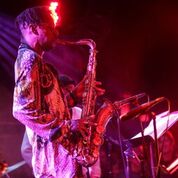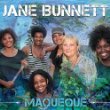The early January concurrence of the Jazz Connect conference, the annual convention of APAP (Association of Performing Arts Presenters), Global Fest and Winter JazzFest makes a good case for Manhattan being the capital of jazz-and-beyond. It’s inarguably true that creative sound-organizing with improvisation and rhythm is world-wide, and our native version — jazz and its derivatives […]
Historic days for US and Cuba, accompanied by jazz
Congratulations to the U.S. and Cuba for advancing our long overdue reset. It’s about time. Jazz at its best has linked our nations for decades, through the tangled history of corrupt dictatorship and revolution, missile crisis, failed invasion, bad relations and trade embargo — and in this recent historic moment, Afro-Cuban-American music is exploding with exciting new recordings. A hint of accords and collaborations […]
Salsa dura and NYC jazz hot
My new City Arts column cites Chris Washburne‘s SYOTOS band, Arturo O’Farrill and Bobby Sanabria as avatars of Latin American music’s essential excitement, so well depicted by the 4-part PBS documentary “Latin Music USA” (viewable online). But let’s not forget Eddie Palmieri is still in his prime (and coming to the Blue Note jazz club […]
Jazz Foundation knows how to party
To raise money for musicians’ health and welfare, how ’bout a jazz party? In three lofts with river views, a thousand attendees of every age, shape, style enjoyed food ‘n’ drink ‘n’ performances including Jimmy Heath playing “Gingerbread Boy,” Arturo O’Farrill‘s teen sons mastering Latin jazz, baritone saxist Hamiet Bluiett with Kahil El’Zabar on mbira. […]
Backlash against grants for jazz?
Nate Chinen, estimable New York Times music journalist, questions the effect of grants like the $253,000 announced by Chamber Music America for jazz composers: Are applicants pressed to create overly grand and pc projects? Ottawa Citizen blogger Peter Hum asks why Canada’s government supports jazz at all. But Afro-Latin Jazz Orchestra leader Arturo O’Farrill has been commissioned to write a […]


